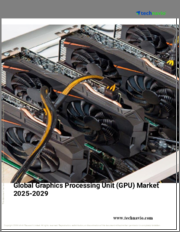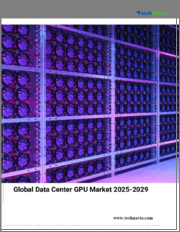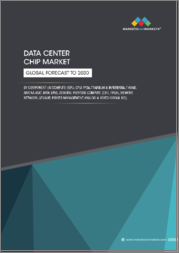
|
시장보고서
상품코드
1541466
그래픽 애드인보드(AIB) 시장 보고서 : 유형, 용도, 최종 용도, 지역별(2024-2032년)Graphics Add-in Board Market Report by Type, Application, End Use, and Region 2024-2032 |
||||||
세계 그래픽 애드인보드(AIB) 시장 규모는 2023년 189억 달러에 달했습니다. 향후 IMARC Group은 2024년부터 2032년까지 16.4%의 연평균 성장률(CAGR)을 보이며 2032년까지 770억 달러에 달할 것으로 예측했습니다.
그래픽스 애드인보드(AIB)는 컴퓨터 시스템에서 그래픽, 메모리, 비주얼 커뮤니케이션 기능을 강화하기 위해 사용되는 전자부품입니다. 비디오 및 그래픽 성능을 향상시키고 중앙처리장치(CPU)의 부하를 최소화하는 단일 칩 프로세서입니다. 통합형과 이산형은 컴퓨터 시스템에 사용되는 가장 일반적인 두 가지 유형의 그래픽 AIB입니다. 통합형 보드는 컴퓨터 머더보드에 내장되어 있어 별도의 카드를 추가할 필요가 없습니다. 반면, 외장형 카드는 머더보드에 추가로 설치되며 요구사항에 따라 업그레이드할 수 있습니다. 이러한 AIB는 일반적으로 데스크톱 컴퓨터, 노트북 컴퓨터, 콘솔, 워크스테이션, 스마트폰 등에 내장되어 고화질(HD) 이미지를 생성합니다.
게임 산업의 괄목할만한 성장은 시장에 긍정적인 영향을 미치는 주요 요인 중 하나입니다. 또한, 터치스크린 기반 가전제품의 사용이 증가하면서 시장 성장을 촉진하고 있습니다. 그래픽 AIB는 원격 워크스테이션, 슈퍼컴퓨터, 시뮬레이터에 널리 사용되고 있습니다. 이러한 장치는 주로 항공우주 및 방위 산업에서 과학 및 기술 용도로 활용되고 있습니다. 또한, 머신러닝(ML), 인공지능(AI), 가상현실(VR) 시스템을 활용한 그래픽 요구사항이 높은 게임 개발 등 다양한 기술 발전도 성장을 촉진하는 요인으로 작용하고 있습니다. 게임 소프트웨어 개발자들은 지리정보 시스템(GIS)과 함께 AIB를 활용해 사용자에게 실시간 공간 입력을 동반한 몰입형 멀티미디어 경험을 제공하고 있습니다. 태블릿, 휴대폰, 게임기, PC 등 게임기에도 AIB와 AMD(Advanced Micro Devices)가 내장되어 성능을 향상시키고 있습니다. 이는 광범위한 연구개발(R&D)과 함께 시장을 더욱 견인할 것으로 예상됩니다.
본 보고서에서 다루는 주요 질문
- 세계 그래픽 애드인보드(AIB) 시장은 지금까지 어떻게 성장해 왔을까?
- COVID-19가 세계 그래픽 애드인보드(AIB) 시장에 미치는 영향은?
- 주요 지역 시장은?
- 유형별 시장 분석은?
- 용도별 시장 현황은?
- 최종 용도별 시장 현황은?
- 산업 가치사슬의 다양한 단계는 무엇인가?
- 업계의 주요 촉진요인과 과제는 무엇인가?
- 세계 그래픽 애드인보드(AIB) 시장의 구조와 주요 플레이어는?
- 업계의 경쟁은 어느 정도인가?
목차
제1장 서문
제2장 조사 범위와 조사 방법
- 조사 목적
- 이해관계자
- 데이터 소스
- 1차 정보
- 2차 정보
- 시장 추정
- 상향식 접근
- 하향식 접근
- 조사 방법
제3장 주요 요약
제4장 소개
- 개요
- 주요 업계 동향
제5장 세계의 그래픽스 애드인보드(AIB) 시장
- 시장 개요
- 시장 실적
- COVID-19의 영향
- 시장 예측
제6장 시장 내역 : 유형별
- 디스크리트
- 시장 동향
- 시장 예측
- 통합형
- 시장 동향
- 시장 예측
제7장 시장 내역 : 용도별
- 게임
- 시장 동향
- 시장 예측
- 디자인과 시각화
- 시장 동향
- 시장 예측
- 고성능 컴퓨팅
- 시장 동향
- 시장 예측
- 데이터센터
- 시장 동향
- 시장 예측
- 기타
- 시장 동향
- 시장 예측
제8장 시장 내역 : 최종 용도별
- 데스크톱
- 시장 동향
- 시장 예측
- 노트북과 태블릿
- 시장 동향
- 시장 예측
- 워크스테이션
- 시장 동향
- 시장 예측
- 기타
- 시장 동향
- 시장 예측
제9장 시장 내역 : 지역별
- 북미
- 미국
- 캐나다
- 아시아태평양
- 중국
- 일본
- 인도
- 한국
- 호주
- 인도네시아
- 기타
- 유럽
- 독일
- 프랑스
- 영국
- 이탈리아
- 스페인
- 러시아
- 기타
- 라틴아메리카
- 브라질
- 멕시코
- 기타
- 중동 및 아프리카
- 시장 동향
- 시장 내역 : 국가별
- 시장 예측
제10장 SWOT 분석
- 개요
- 강점
- 약점
- 기회
- 위협
제11장 밸류체인 분석
제12장 Porter's Five Forces 분석
- 개요
- 구매자의 교섭력
- 공급 기업의 교섭력
- 경쟁 정도
- 신규 참여업체의 위협
- 대체품의 위협
제13장 가격 분석
제14장 경쟁 상황
- 시장 구조
- 주요 기업
- 주요 기업 개요
- Advanced Micro Devices Inc.
- AsusTek Computer Inc.
- EVGA Corporation
- Gigabyte Technology Co. Ltd.
- Intel Corporation
- Matrox
- Micro-Star International Co.
- Nvidia Corporation
- Sapphire Technology
- ZOTAC(PC Partner Limited)
The global graphics add-in board (AIB) market size reached US$ 18.9 Billion in 2023. Looking forward, IMARC Group expects the market to reach US$ 77.0 Billion by 2032, exhibiting a growth rate (CAGR) of 16.4% during 2024-2032.
Graphics add-in board (AIB) refers to an electronic component used in computer systems to augment graphics, memory and visual communication capabilities. It is a single-chip processor that improves the performance of videos and graphics and minimizes the load on the central processing unit (CPU). Integrated and discrete are the two most commonly used variants of graphics AIB used in computer systems. The integrated boards are built into the motherboard of the computer to eliminate the need for additional cards. On the other hand, discrete cards are additionally installed into the motherboard and can be upgraded as per requirement. These AIBs are commonly embedded in desktop computers, laptops, consoles, workstations and smartphones to generate high-definition (HD) images.
Significant growth in the gaming industry is one of the key factors creating a positive impact on the market. Furthermore, increasing utilization of touchscreen-based consumer electronics is also driving the market growth. Graphic AIBs are widely being used in remote workstations, supercomputers and simulators. These devices are primarily utilized for scientific and technical applications in the aerospace and defense industries. Additionally, various technological advancements, such as the utilization of machine learning (ML), artificial intelligence (AI) and virtual reality (VR) systems to create games with high graphic requirements, are acting as other growth-inducing factors. Gaming software developers are using AIBs, along with geographic information systems (GIS), to offer an immersive multimedia experience with real-time spatial input to the user. Gaming machines, such as tablets, phones, consoles and personal computers, are also being embedded with AIBs and Advanced Micro Devices (AMDs) for enhanced performance capabilities. This, along with extensive research and development (R&D), is expected to drive the market further.
Key Market Segmentation:
IMARC Group provides an analysis of the key trends in each sub-segment of the global graphics add-in board (AIB) market report, along with forecasts at the global, regional and country level from 2024-2032. Our report has categorized the market based on type, application and end use.
Breakup by Type:
Discrete
Integrated
Breakup by Application:
Gaming
Design and Visualization
High-performance Computing
Data Center
Others
Breakup by End Use:
Desktops
Notebooks and Tablets
Workstations
Others
Breakup by Region:
North America
United States
Canada
Asia Pacific
China
Japan
India
South Korea
Australia
Indonesia
Others
Europe
Germany
France
United Kingdom
Italy
Spain
Russia
Others
Latin America
Brazil
Mexico
Others
Middle East and Africa
Competitive Landscape:
The report has also analysed the competitive landscape of the market with some of the key players being Advanced Micro Devices Inc., AsusTek Computer Inc., EVGA Corporation, Gigabyte Technology Co. Ltd., Intel Corporation, Matrox, Micro-Star International Co., Nvidia Corporation, Sapphire Technology and ZOTAC (PC Partner Limited).
Key Questions Answered in This Report:
- How has the global graphics add-in board (AIB) market performed so far and how will it perform in the coming years?
- What has been the impact of COVID-19 on the global graphics add-in board (AIB) market?
- What are the key regional markets?
- What is the breakup of the market based on the type?
- What is the breakup of the market based on the application?
- What is the breakup of the market based on the end use?
- What are the various stages in the value chain of the industry?
- What are the key driving factors and challenges in the industry?
- What is the structure of the global graphics add-in board (AIB) market and who are the key players?
- What is the degree of competition in the industry?
Table of Contents
1 Preface
2 Scope and Methodology
- 2.1 Objectives of the Study
- 2.2 Stakeholders
- 2.3 Data Sources
- 2.3.1 Primary Sources
- 2.3.2 Secondary Sources
- 2.4 Market Estimation
- 2.4.1 Bottom-Up Approach
- 2.4.2 Top-Down Approach
- 2.5 Forecasting Methodology
3 Executive Summary
4 Introduction
- 4.1 Overview
- 4.2 Key Industry Trends
5 Global Graphics Add-in Board (AIB) Market
- 5.1 Market Overview
- 5.2 Market Performance
- 5.3 Impact of COVID-19
- 5.4 Market Forecast
6 Market Breakup by Type
- 6.1 Discrete
- 6.1.1 Market Trends
- 6.1.2 Market Forecast
- 6.2 Integrated
- 6.2.1 Market Trends
- 6.2.2 Market Forecast
7 Market Breakup by Application
- 7.1 Gaming
- 7.1.1 Market Trends
- 7.1.2 Market Forecast
- 7.2 Design and Visualization
- 7.2.1 Market Trends
- 7.2.2 Market Forecast
- 7.3 High-performance Computing
- 7.3.1 Market Trends
- 7.3.2 Market Forecast
- 7.4 Data Center
- 7.4.1 Market Trends
- 7.4.2 Market Forecast
- 7.5 Others
- 7.5.1 Market Trends
- 7.5.2 Market Forecast
8 Market Breakup by End Use
- 8.1 Desktops
- 8.1.1 Market Trends
- 8.1.2 Market Forecast
- 8.2 Notebooks and Tablets
- 8.2.1 Market Trends
- 8.2.2 Market Forecast
- 8.3 Workstations
- 8.3.1 Market Trends
- 8.3.2 Market Forecast
- 8.4 Others
- 8.4.1 Market Trends
- 8.4.2 Market Forecast
9 Market Breakup by Region
- 9.1 North America
- 9.1.1 United States
- 9.1.1.1 Market Trends
- 9.1.1.2 Market Forecast
- 9.1.2 Canada
- 9.1.2.1 Market Trends
- 9.1.2.2 Market Forecast
- 9.1.1 United States
- 9.2 Asia Pacific
- 9.2.1 China
- 9.2.1.1 Market Trends
- 9.2.1.2 Market Forecast
- 9.2.2 Japan
- 9.2.2.1 Market Trends
- 9.2.2.2 Market Forecast
- 9.2.3 India
- 9.2.3.1 Market Trends
- 9.2.3.2 Market Forecast
- 9.2.4 South Korea
- 9.2.4.1 Market Trends
- 9.2.4.2 Market Forecast
- 9.2.5 Australia
- 9.2.5.1 Market Trends
- 9.2.5.2 Market Forecast
- 9.2.6 Indonesia
- 9.2.6.1 Market Trends
- 9.2.6.2 Market Forecast
- 9.2.7 Others
- 9.2.7.1 Market Trends
- 9.2.7.2 Market Forecast
- 9.2.1 China
- 9.3 Europe
- 9.3.1 Germany
- 9.3.1.1 Market Trends
- 9.3.1.2 Market Forecast
- 9.3.2 France
- 9.3.2.1 Market Trends
- 9.3.2.2 Market Forecast
- 9.3.3 United Kingdom
- 9.3.3.1 Market Trends
- 9.3.3.2 Market Forecast
- 9.3.4 Italy
- 9.3.4.1 Market Trends
- 9.3.4.2 Market Forecast
- 9.3.5 Spain
- 9.3.5.1 Market Trends
- 9.3.5.2 Market Forecast
- 9.3.6 Russia
- 9.3.6.1 Market Trends
- 9.3.6.2 Market Forecast
- 9.3.7 Others
- 9.3.7.1 Market Trends
- 9.3.7.2 Market Forecast
- 9.3.1 Germany
- 9.4 Latin America
- 9.4.1 Brazil
- 9.4.1.1 Market Trends
- 9.4.1.2 Market Forecast
- 9.4.2 Mexico
- 9.4.2.1 Market Trends
- 9.4.2.2 Market Forecast
- 9.4.3 Others
- 9.4.3.1 Market Trends
- 9.4.3.2 Market Forecast
- 9.4.1 Brazil
- 9.5 Middle East and Africa
- 9.5.1 Market Trends
- 9.5.2 Market Breakup by Country
- 9.5.3 Market Forecast
10 SWOT Analysis
- 10.1 Overview
- 10.2 Strengths
- 10.3 Weaknesses
- 10.4 Opportunities
- 10.5 Threats
11 Value Chain Analysis
12 Porters Five Forces Analysis
- 12.1 Overview
- 12.2 Bargaining Power of Buyers
- 12.3 Bargaining Power of Suppliers
- 12.4 Degree of Competition
- 12.5 Threat of New Entrants
- 12.6 Threat of Substitutes
13 Price Analysis
14 Competitive Landscape
- 14.1 Market Structure
- 14.2 Key Players
- 14.3 Profiles of Key Players
- 14.3.1 Advanced Micro Devices Inc.
- 14.3.1.1 Company Overview
- 14.3.1.2 Product Portfolio
- 14.3.1.3 Financials
- 14.3.1.4 SWOT Analysis
- 14.3.2 AsusTek Computer Inc.
- 14.3.2.1 Company Overview
- 14.3.2.2 Product Portfolio
- 14.3.2.3 Financials
- 14.3.2.4 SWOT Analysis
- 14.3.3 EVGA Corporation
- 14.3.3.1 Company Overview
- 14.3.3.2 Product Portfolio
- 14.3.4 Gigabyte Technology Co. Ltd.
- 14.3.4.1 Company Overview
- 14.3.4.2 Product Portfolio
- 14.3.4.3 Financials
- 14.3.5 Intel Corporation
- 14.3.5.1 Company Overview
- 14.3.5.2 Product Portfolio
- 14.3.5.3 Financials
- 14.3.5.4 SWOT Analysis
- 14.3.6 Matrox
- 14.3.6.1 Company Overview
- 14.3.6.2 Product Portfolio
- 14.3.7 Micro-Star International Co.
- 14.3.7.1 Company Overview
- 14.3.7.2 Product Portfolio
- 14.3.7.3 Financials
- 14.3.8 Nvidia Corporation
- 14.3.8.1 Company Overview
- 14.3.8.2 Product Portfolio
- 14.3.8.3 Financials
- 14.3.8.4 SWOT Analysis
- 14.3.9 Sapphire Technology
- 14.3.9.1 Company Overview
- 14.3.9.2 Product Portfolio
- 14.3.10 ZOTAC (PC Partner Limited)
- 14.3.10.1 Company Overview
- 14.3.10.2 Product Portfolio
- 14.3.1 Advanced Micro Devices Inc.



















